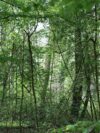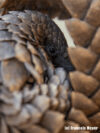Luambe National Park & Conservation Efforts
Luambe National Park
Luambe National Park (LNP) is situated in the heart of Zambia’s stunning Luangwa Valley, in the Eastern Province. Covering an area of around 350 square kilometres, it might seem comparably small, but Luambe is actually part of a much bigger, largely unfragmented wilderness system, the Luangwa Valley, stretching over 70,000 square kilometres, centered around the famous Luangwa River.
LNP is special because it’s the only national park in the Luangwa valley situated on the eastern side of the river, creating a unique pathway for wildlife to roam freely into neighboring areas like Lumimba GMA and Lukusuzi National Park to the east. Its western border runs alongside the Luangwa River, while the eastern boundary, marked by the Lupita River, sits at the base of the sprawling Nyika escarpment.
Here, you’ll find a rich tapestry of habitats, from lush riverine forests to expansive floodplains and shrublands. This diversity provides a perfect home for an abundance of wildlife, including iconic species like elephants, lions, leopards, and buffalo, known as the Big Four (minus the Black Rhino). You’ll also encounter unique subspecies like Cookson’s Wildebeest, Crawshay’s Zebra, and the Thornicroft Giraffe. And it’s not just about the big animals; the park is a haven for over 400 species of birds, along with countless reptiles, amphibians, fish, and insects.
Visiting Luambe National Park
Access to LNP is primarily available from late May to November during the dry season, as large portions of the park become inaccessible due to the prevalence of Black Cotton Soil during the rainy season. Tourists can decide to visit the national park by themselves in their own rental car with a small fee to be paid at the park entrance gate. Alternatively, there is a tourism facility in the park which offers comfortable accomodation and various safari activities. The park’s road network is concentrated in its western region, with a lack of infrastructure limiting accessibility to two-thirds of the park. However, an airstrip located in the Chitungulu Community, approximately 30 minutes north of LNP, allows for access by air. Currently, Luambe Camp & Conservation is the sole tourism facility operating within the national park. Another community-run campsite, Kamumonzo Community Campsite, is located outside of the northern gate of Luambe National Park
Topography, Climate and Hydrology
Luambe National Park (LNP) is predominantly situated in the flat terrain of the Luangwa Valley, with elevations ranging from approximately 550 meters at the Luangwa River to around 680 meters above sea level as you move eastward. While the landscape features some depressions, gullies, and steep sandbanks along the main rivers, there are hills to the east.
Regarding its climate, LNP experiences a typical tropical climate characterized by moderate rainfall averaging between 700 to 900 millimeters annually. The climate manifests in three distinct seasons: the hot-wet season from November to April, the cool-dry season from May to August, and the hot-dry season from September to October or November. Known as one of the hottest regions in Zambia, LNP records an average daily temperature of 25°C, with temperatures peaking at 45°C in October. Climate change poses increasing pressure on the region, manifesting through recurrent droughts, intense weather events, and flooding.
Hydrologically, LNP encompasses a significant portion of the Luangwa River catchment. While none of the Luangwa tributaries are perennial within LNP, three rivers—Lupita/Kangwa, Lumimba, and Mukamadzi—become crucial water sources for wildlife in the park from May to late September, particularly as you move eastward from the Luangwa River.
Animals and Plants
Biologically, despite its relatively modest size, Luambe National Park boasts a mosaic of unique habitats and biotopes, hosting a considerable portion of the 1348 vascular plant species found in the Luangwa Valley. These favorable conditions contribute to the highest estimated large mammal biomass per square kilometer among Zambian national parks. However, the park’s wildlife populations have long been critically low, representing only 5% of its potential due to various human pressures, including poaching, unsustainable resource use, and inadequate land use management. Since 2014, there are ongoing conservation efforts to improve the Luambe landscape.
History
Declared a Game Reserve in 1938 to safeguard its high animal densities, particularly its Black Rhino population, Luambe National Park later gained national park status in 1972. However, due to its remote location and limited resources, ensuring effective protection has been challenging. The park has faced periods of underfunding and insufficient investment, contributing to fluctuating game numbers and exploitation by other stakeholders, such as local hunting operators.
Luambe Camp & Conservation & Nsanga Conservation Camp
Luambe Camp is situated in the north-western part of Zambia’s Luambe National Park, right on the banks of the Luangwa River. Guests, accommodated in one of the five comfortable tents, can not only enjoy the wildlife and nature of the Luangwa Valley on daily safari excursions, but also actively learn and participate in the conservation of animal and plant diversity thanks to the affiliated Nsanga Conservation Camp.
This enables safari guests to directly support the team of Nsanga Conservation Zambia Ltd. in research and conservation activities during game drives and thus contribute to the preservation of Luambe National Park.
The research activities carried out in Luambe concern different areas and range from the evaluation of camera traps to the monitoring of selected species. Activities in the service of species conservation and community empowerment take place on a regular basis in Luambe. As the camp is the only operator in the national park, a “Luambe Conservation Safari” is characterised by exceptional privacy and seclusion.



